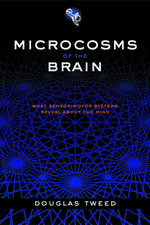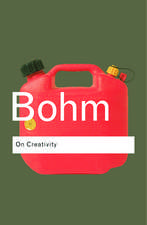The Role of Communication in Learning To Model
Editat de Paul Brna, Michael Baker, Keith Stenning, Andree Tiberghienen Limba Engleză Paperback – 11 sep 2014
Taken together, the chapters brought together in this volume illustrate the diversity and vivacity of research on a relatively neglected, yet crucially important aspect of education across disciplines: learning to model. A common thread across the research presented is the view that communication and interaction, as fundamental to most educational practices and as a repository of conceptual understanding and a learning mechanism in itself, is intimately linked to elaborating meaningful, coherent, and valid representations of the world.
The editors hope this volume will contribute to both the fundamental research in its field and ultimately provide results that can be of practical value in designing new situations for teaching and learning modeling, particularly those involving computers.
Preț: 483.16 lei
Nou
Puncte Express: 725
Preț estimativ în valută:
92.45€ • 96.77$ • 76.95£
92.45€ • 96.77$ • 76.95£
Carte tipărită la comandă
Livrare economică 31 martie-14 aprilie
Preluare comenzi: 021 569.72.76
Specificații
ISBN-13: 9780415652711
ISBN-10: 0415652715
Pagini: 351
Dimensiuni: 152 x 229 x 19 mm
Greutate: 0.47 kg
Ediția:1
Editura: Taylor & Francis
Colecția Psychology Press
Locul publicării:Oxford, United Kingdom
ISBN-10: 0415652715
Pagini: 351
Dimensiuni: 152 x 229 x 19 mm
Greutate: 0.47 kg
Ediția:1
Editura: Taylor & Francis
Colecția Psychology Press
Locul publicării:Oxford, United Kingdom
Public țintă
ProfessionalCuprins
Contents: Preface. Part I: Coordinating Representations. K. Stenning, J.G. Greeno, R. Hall, M. Sommerfeld, M. Wiebe, Coordinating Mathematical With Biological Multiplication: Conceptual Learning as the Development of Heterogeneous Reasoning Systems. J. Vince, A. Tiberghien, Modeling in Teaching and Learning Elementary Physics. J.R. Frederiksen, B.Y. White, Conceptualizing and Constructing Linked Models: Creating Coherence in Complex Knowledge Systems. Part II: Provoking More Effective Modeling. R. Luckin, B. du Boulay, Construction and Abstraction: Contrasting Methods of Supporting Model Building in Learning Science. Z. Fund, Cognitive Support in Computerized Science Problem Solving: Eliciting External Representation and Improving Search Strategies. A. Bouwer, V.B. Machado, B. Bredeweg, Interactive Model-Building Environments. S. Bull, V. Dimitrova, P. Brna, Enhancing Reflective Modeling Through Communicative Interaction in Learning Environments. Part III: Collaboration and Language. P. Brna, M. Burton, Modeling the Modelers: Communicating About Content Through Shared External Representations. K. Lund, Teachers' Explanations of Students' Collaborative Modeling Activities. D. Alamargot, J. Andriessen, The "Power" of Text Production Activity in Collaborative Modeling: Nine Recommendations to Make a Computer-Supported Situation Work. M. Baker, Argumentative Interactions, Discursive Operations, and Learning to Model in Science.
Recenzii
"It is thus refreshing to see an edited collection that deals explicitly with cognitive science and education. This collection, which stems from a conference held in Corsica in 1999, consists of a mix of chapters that apply cognitive science approaches to the understanding of learning in a variety of scientific domains and chapters that present and assess different computer-assisted learning environments."
—American Journal of Psychology
—American Journal of Psychology
Notă biografică
Paul Brna, Michael Baker, Keith Stenning, Anfree Tiberghien
Descriere
This book is much more education driven than expected. I thought it was more likely to be at modelling/HCI end, I I think I need to work on an ABI blurb with this in mind. Lots of contributors were dropped which may be why it came out with this emphasis.















